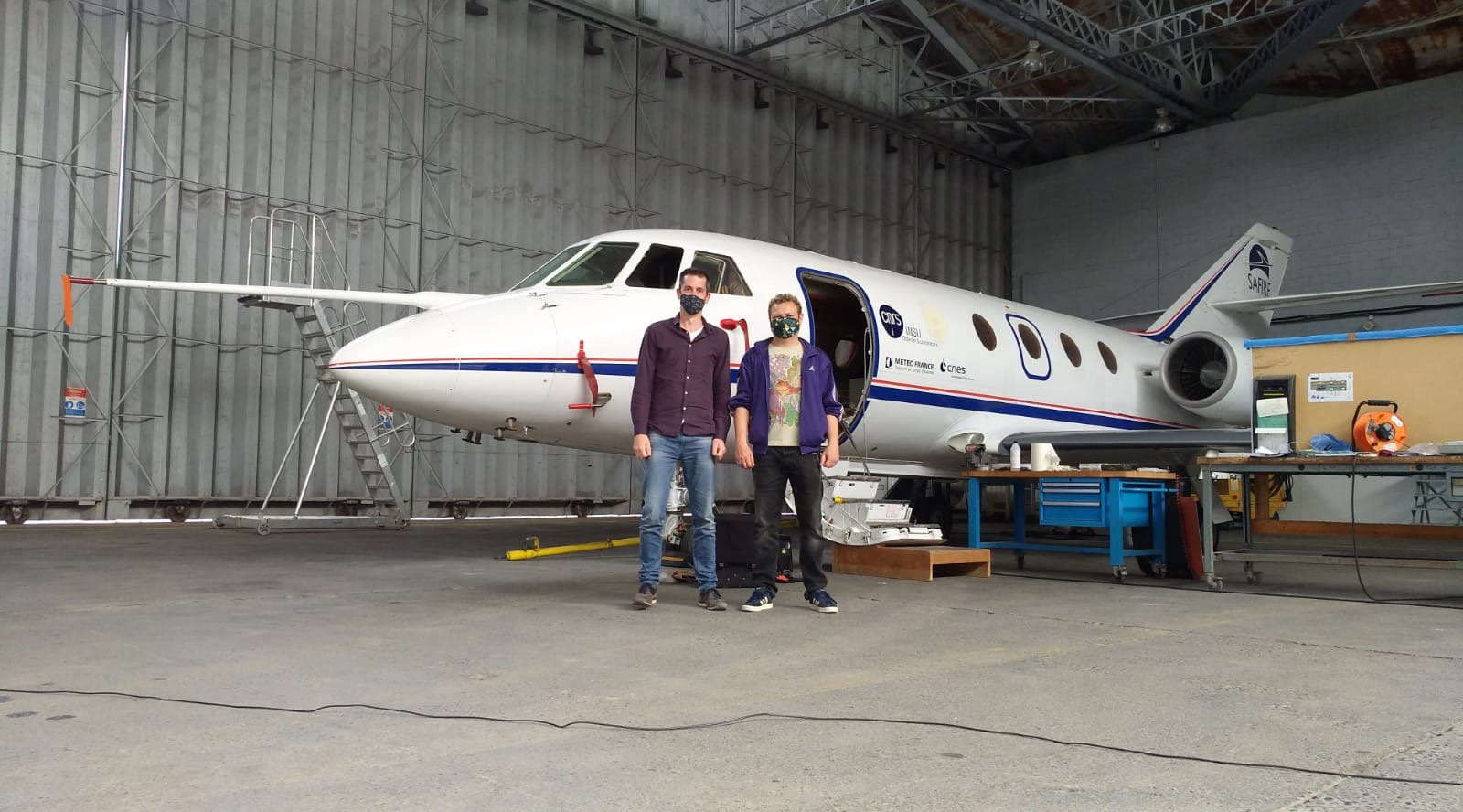SRON’s aerosol-instrument SPEX airborne spreidt opnieuw haar vleugels en start begin oktober een serie meetvluchten boven Europa aan boord van een Falcon-20 onderzoeksvliegtuig. Het gaat aerosolen meten in de atmosfeer—kleine stofdeeltjes die metingen van het broeikasgas CO2 kunnen verstoren. Op den duur moet SPEX de ruimte in gaan als onderdeel van de Europese SCARBO-missie.

Europa zet groot in op het meten van CO2-uitstoot vanuit de ruimte, om uiteindelijk de European Green Deal targets te halen. Als aanvulling op de toekomstige grote CO2-ruimtemissie CO2M financiert de Europese Commissie een samenwerking van tien organisaties, waaronder SRON, die werken aan een constellatie van kleinere satellieten: het Space CARBon Observatory (SCARBO). Voor SCARBO is een nieuw miniatuur CO2-meetinstrument, nanoCarb, ontwikkeld in Frankrijk. Het Nederlandse SPEX gaat meevliegen met SCARBO om de CO2-metingen te corrigeren voor verstoringen door aerosolen. Voordat deze instrumenten de ruimte in gaan, doen ze eerst een reeks meetvluchten op de Falcon-20 vanuit Toulouse.
Een team van SRON-engineers is al afgereisd naar Toulouse om SPEX airborne in het Falcon-20 vliegtuig te plaatsen. ‘Na de installatie zullen er één of twee testvluchten boven Frankrijk worden uitgevoerd,’ zegt Martijn Smit van SRON. ‘Dan wordt het wel even spannend omdat we dan zien of alles werkt zoals we willen. Als de testvlucht goed verloopt kan het echte werk beginnen.’ Er volgen dan vluchten boven Polen en Duitsland over een aantal energiecentrales die bekend staan om hun hoge CO2-uitstoot. Ook vliegt het toestel over Noord-Italië en Zuid-Spanje, waar vaak verhoogde concentraties van aerosolen in de lucht hangen. Hierbij is het van belang dat de “targets” niet in wolken gehuld zijn tijdens de vluchten.
Deze campagne wordt de eerste keer dat CO2 en aerosolen gelijktijdig worden gemeten.
Bijschrift headerfoto: Electrical Engineer Rob Wolfs (links) en Software Engineer Jens Johanson (rechts) voor het Falcon-20 onderzoeksvliegtuig in Toulouse.
Het SCARBO consortium staat onder leiding van Airbus Defence and Space in Frankrijk. Het project wordt gefinancierd in het Horizon 2020 programma van de Europese Commissie. SRON en Airbus Defence and Space Netherlands ontwikkelen op dit moment ook de spectropolarimeter SPEXone voor de NASA-satellietmissie PACE, die in 2023 wordt gelanceerd.
Aerosol instrument SPEX airborne starts measurement campaign in European airspace
SRON’s aerosol instrument SPEX airborne is spreading its wings again. In early October it will start a series of measurement flights across Europe onboard a Falcon-20 research aircraft. SPEX airborne will measure aerosols in the atmosphere—tiny dust particles that can disrupt measurements of the greenhouse gas CO2. In time, SPEX is intended to go into space as part of the European SCARBO mission.
Europe is committed to measuring CO2 emissions from space, in order to ultimately achieve the European Green Deal targets. In addition to the future large CO2 space mission CO2M, the European Commission is funding a collaboration of ten organizations, including SRON, that are working on a constellation of smaller satellites: the Space CARBon Observatory (SCARBO). A new miniature CO2 measuring instrument, nanoCarb, has been developed for SCARBO in France. The Dutch SPEX airborne is part of SCARBO to correct the CO2 measurements for disturbances caused by aerosols. Before these instruments go into space, they first perform a series of measurement flights from Toulouse on the Falcon-20.
A team of SRON engineers has already arrived in Toulouse to install SPEX airborne in the Falcon-20 aircraft. ‘After the installation, one or two test flights will be carried out over France,’ says Martijn Smit from SRON. ‘Then it gets exciting because we’ll see whether everything functions properly. If the test flight goes well, the real work begins.’ There will be flights over Poland and Germany above a number of power plants with high CO2 emissions. The aircraft will also fly across Northern Italy and Southern Spain—regions with often increased concentrations of aerosols.
This campaign will be the first time that CO2 and aerosol are measured simultaneously.
Caption header image: Electrical Engineer Rob Wolfs (left) and Software Engineer Jens Johanson (right) in front of the Falcon-20 research aircraft in Toulouse.
The SCARBO consortium is led by Airbus Defense and Space in France. The project draws funding from the Horizon 2020 program of the European Commission. SRON and Airbus Defense and Space Netherlands are also currently developing the spectropolarimeter SPEXone for the NASA satellite mission PACE, which will be launched in 2023.


